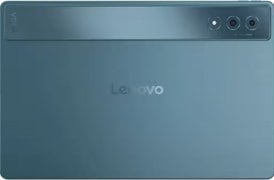- Home
- Mobiles
- Mobiles Features
- Samsung Galaxy M31s vs Redmi Note 9 Pro vs Redmi Note 9 Pro Max: Price, Specifications Compared
Samsung Galaxy M31s vs Redmi Note 9 Pro vs Redmi Note 9 Pro Max: Price, Specifications Compared
We compare the price, specifications, and features of the Samsung Galaxy M31s with those of the Redmi Note 9 Pro and the Redmi Note 9 Pro Max.

All the three phones have full-HD+ displays with Gorilla Glass protection
Samsung Galaxy M31s has been launched in India, and it goes up against the likes of Redmi Note 9 Pro, as well as the Redmi Note 9 Pro Max, which were unveiled earlier this year. All the three phones pack a quad rear camera setup, and come in multiple RAM as well as storage options. All of them come with fast charging support but are paired with different battery capacities. Here is how the three phones stack up against each other.
Samsung Galaxy M31s vs Redmi Note 9 Pro vs Redmi Note 9 Pro Max: Price
The Samsung Galaxy M31s will be available at a starting price of Rs. 19,499 for the 6GB RAM variant. The 8GB RAM option is priced at Rs. 21,499. Both the variants have 128GB of storage. It is offered in Mirage Black and Mirage Blue colours. Meanwhile, both the Redmi smartphones were launched at different price points but due to a revision in prices, customers have to shell out more to own one.
The Redmi Note 9 Pro starts at Rs. 13,999 (launch price Rs. 12,999) for the 4GBRAM + 64GB storage variant, while the 6GB RAM + 128GB storage model now costs Rs. 16,999 (no price change). It is offered in Interstellar Black, Glacier White, and Aurora Blue colours.
The Redmi Note 9 Pro Max carries a price tag of Rs. 16,999 (launch price Rs. 14,999) for the 6GB RAM + 64GB storage variant. For the 6GB RAM + 128GB storage model, customers have to pay Rs. 18,999 (launch price Rs. 16,999). The top-end model with 8GB RAM + 128GB storage configuration costs Rs. 19,999 (launch price Rs. 18,999). It is available in Interstellar Black, Glacier White, and Aurora Blue colour options.
Samsung Galaxy M31s vs Redmi Note 9 Pro vs Redmi Note 9 Pro Max: Specifications
All the three phones have dual-SIM (Nano) support and run on Android 10. The Samsung Galaxy M31s comes with One UI 2.0 on top whereas both the Redmi devices have MIUI 11 out-of-the-box. The Galaxy M31s sports a 6.5-inch full-HD+ Super AMOLED Infinity-O Display with the hole-punch in the top centre of the screen. The display has 420 nits of peak brightness and Gorilla Glass 3 protection. On the other hand, both the smartphones offered by Xiaomi feature a 6.67-inch full-HD+ display with 450 nits brightness, Gorilla Glass 5 protection and an oleophobic layer on top.
The Samsung M31s is powered by an octa-core Exynos 9611 mobile platform. In comparison, both the Redmi Note 9 Pro and the Redmi Note 9 Pro Max have the Qualcomm Snapdragon 720G processor under the hood. All the three phones have a microSD card to expand the storage.
When it comes to optics, all the three smartphones have quad rear cameras on the back. The Galaxy M31s sports a 64-megapixel primary Sony IMX682 sensor with an f/1.8 lens. It is paired with a 12-megapixel sensor with an ultra-wide-angle lens having a 123-degree field of view. There are two 5-megapixel sensors for depth and macro cameras. The Galaxy M31s comes pre-installed with Intelli-Cam feature for an enhanced camera experience. On the front, customers will get a 32-megapixel camera that supports 4K and slo-mo video recording.
The Redmi Note 9 Pro features a 48-megapixel main sensor with an f/1.79 aperture lens. It is coupled with an 8-megapixel sensor having a wide-angle camera with a 119-degrees field of view lens, a 5-megapixel macro shooter with 2cm focus range, and a 2-megapixel depth sensor. On the front is a 16-megapixel camera that can record 1080p videos at up to 60fps, slo-mo videos at 960fps, and 4K at 30fps.
Meanwhile, the Redmi Note 9 Pro Max is equipped with a 64-megapixel primary sensor with an f/1.89 aperture lens. You also get an 8-megapixel wide-angle camera with a 119-degrees field of view, a 5-megapixel macro camera with 2cm focus distance, a 2-megapixel depth sensor. Just like the Galaxy M31s, the Redmi Note 9 Pro Max also has a 32-megapixel front camera that can record 1080p videos at up to 60fps, slo-mo videos at 960fps, and 4K at 30fps.
Other features include battery capacity and fast charging. The Samsung Galaxy M31s comes with a massive 6,000mAh battery bundled with 25W fast charging support. The Redmi Note 9 Pro is equipped with a 5,020mAh battery that supports 18W fast charging. Its sibling, the Redmi Note 9 Pro Max houses a 5,020mAh battery with 33W fast charging support. Both the Redmi phones have NavIC — an autonomous regional satellite navigation system for accurate real-time positioning and timing.
Is Redmi Note 9 Pro Max the best affordable camera phone in India? We discussed this on Orbital, our weekly technology podcast, which you can subscribe to via Apple Podcasts or RSS, download the episode, or just hit the play button below.
Get your daily dose of tech news, reviews, and insights, in under 80 characters on Gadgets 360 Turbo. Connect with fellow tech lovers on our Forum. Follow us on X, Facebook, WhatsApp, Threads and Google News for instant updates. Catch all the action on our YouTube channel.
Related Stories
- Samsung Galaxy Unpacked 2025
- ChatGPT
- Redmi Note 14 Pro+
- iPhone 16
- Apple Vision Pro
- Oneplus 12
- OnePlus Nord CE 3 Lite 5G
- iPhone 13
- Xiaomi 14 Pro
- Oppo Find N3
- Tecno Spark Go (2023)
- Realme V30
- Best Phones Under 25000
- Samsung Galaxy S24 Series
- Cryptocurrency
- iQoo 12
- Samsung Galaxy S24 Ultra
- Giottus
- Samsung Galaxy Z Flip 5
- Apple 'Scary Fast'
- Housefull 5
- GoPro Hero 12 Black Review
- Invincible Season 2
- JioGlass
- HD Ready TV
- Laptop Under 50000
- Smartwatch Under 10000
- Latest Mobile Phones
- Compare Phones
- Realme P4x 5G
- OnePlus Ace 6T
- OPPO A6x 5G
- Samsung Galaxy Z TriFold
- Poco F8 Ultra
- Poco F8 Pro
- Huawei Mate 80 RS Master Edition
- Huawei Mate 80 Pro Max
- Asus ProArt P16
- MacBook Pro 14-inch (M5, 2025)
- Poco Pad M1
- Poco Pad X1
- Just Corseca Skywatch Pro
- Honor Watch X5
- Acerpure Nitro Z Series 100-inch QLED TV
- Samsung 43 Inch LED Ultra HD (4K) Smart TV (UA43UE81AFULXL)
- Asus ROG Ally
- Nintendo Switch Lite
- Haier 1.6 Ton 5 Star Inverter Split AC (HSU19G-MZAID5BN-INV)
- Haier 1.6 Ton 5 Star Inverter Split AC (HSU19G-MZAIM5BN-INV)




















